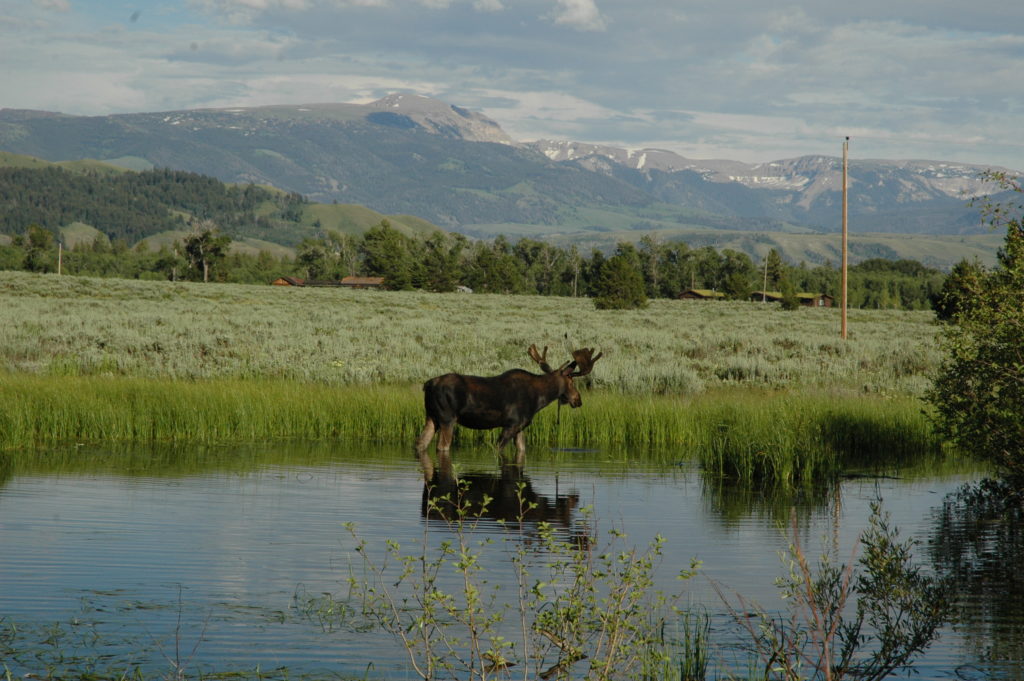What is the state of our wildlife in Jackson Hole?
Wildlife is consistently ranked as our community’s highest priority and community value – but we don’t have a shared understanding of how our wildlife is doing. Which species are in decline, which are thriving, and what threats do they face?
State of Wildlife...
- Presents a set of conservation "targets" that encompass the biodiversity of the Jackson Hole area most in need of our attention: Snake River and the associated wetland complex including hydrology, cottonwood galleries, beaver, and Snake River Cutthroat Trout; sagebrush habitat and dependent species; ungulate migration; moose; goshawk and mature forest mosaic; and White Bark Pine.
- Highlights the ecological values, current status and trends, major threats, and information gaps regarding each of these significant species, habitats, and natural processes.
- Explains direct and indirect threats to the conservation targets, from increased development and roads to climate change.
- Compliments the exemplary work already underway by our land and resource management agencies, local nonprofits, local leaders, and governments. This report is written for everyone, not just experts, so we can all be involved in protecting the wildlife that makes Jackson Hole special.
We commissioned local scientists to write the State of Wildlife Report so that our whole community can protect our wildlife based on the best available and most accurate science.
Did you know?
- Beaver: Beaver abundance in Grant Teton National Park declined by almost 50% between 1977 and 2004 and another 25% by 2011, together totaling an 80% drop over the past 40 years.
- Cutthroat: A 2008 survey of Flat Creek in the National Elk Refuge upstream from the fish hatchery showed Snake River Cutthroat Trout greater that five inches in length had declined from 191 per mile in 2002 to 58 per mile.
- Sage-Grouse: It is estimated that 45% of historic sage-grouse habitat has been lost. Sage-grouse numbers have declined by 50-75% since the 1950's.
- Bighorn Sheep: The Teton bighorn sheep herd is an example of a local ungulate population that has lost its migration routes due to human development and now persists at very low numbers.
- Moose: From peak population estimate of 3,000-5,000 in 1990-1992, moose numbers have since plummeted at an alarming rate to about 500 moose in the Jackson herd.
- Narrowleaf Cottonwood Galleries: An estimated 30% of this forest type, which functions as an essential habitat corridor for larger terrestrial species, has been degraded since the 1950's between Jackson Lake dam and Moose. This figure is likely greater for the leveed areas south of the park.
- Pronghorn Habitat: Between 2005 and 2009, high-use pronghorn habitat in the Jonah and Pinedale Anticline Project Area gas fields south of Pinedale declined by 82%, which is likely to have a negative long-term impact on this pronghorn population.
State of Wildlife Report Chapters
Chapter 1: Wetlands | Wetland Creation Story
Chapter 2: Sagebrush | Community Sagebrush Value
Chapter 3: Ungulate Migration | Community Ungulate Encounter
Chapter 4: Moose | Community Moose Encounter
Chapter 5: Goshawk & Mature Forest | Community Goshawk Encounter
Chapter 6: Whitebark Pine | Community Whitebark Pine Encounter
To view the full document, click here.





